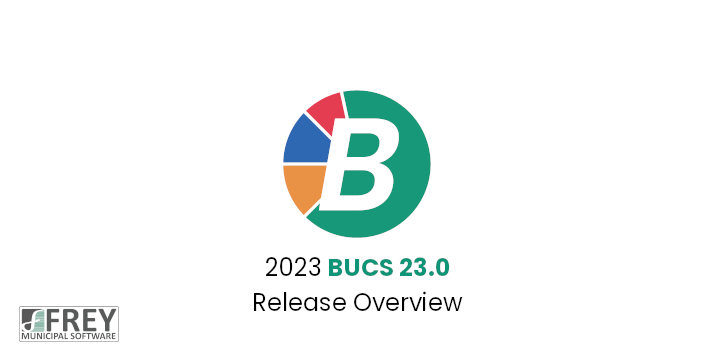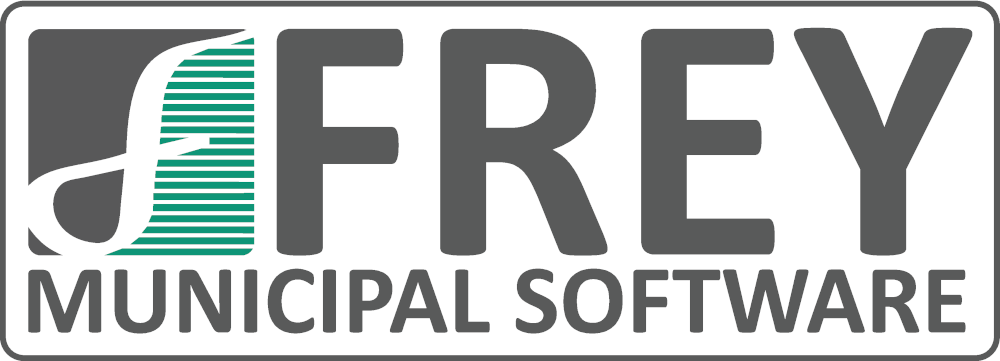BUCS 23 Fund Accounting Software Release

BUCS 23, our Fund Accounting Software was released to all customers in September. The new release is loaded with fantastic new features and enhancements. Check out the video below for a guided presentation or read the release notes below.
The BUCS 23.0 Release is loaded with new features, improvements, and refinements. These changes come from the Annual Survey and requests submitted throughout the year. Our goal when updating BUCS is to make the system faster, more efficient, and more pleasing to use. Below are highlights of the major changes
and new features found in BUCS 23.0.
- Chart of Accounts. A Comment sort sequence has been added to Chart of Accounts and its search. This could allow a user to use the account’s comment field as an additional longer description field and then be able to sort and search on it.
- Fund Control. A new Comment field has been added to Fund Control. This is a 50 character field that is searchable. When using the Fund Wizard to create a new fund, there is the ability to enter in the new comment.
- Journal Entry. There is now the ability to have each Journal Entry print on a separate page on the Journal Entry Transaction Log. There is a new “Page Break Between Journal Entries on J/E Transaction Log” option in System Controls on the G/L tab. This feature also applies to the Transaction Log Reprint and the Auto Reverse Journal Entries transaction logs.
- Posting Analysis. The “P.O. Num” heading has been renamed to “PO/Receipt” to better indicate what the column on the report is used for. When viewing the Line Item Detail, the “P.O. Number” label was also changed to “PO/Receipt”.
- Projects. Custom fields have been added to Projects. There are 10 user definable 30-character alpha numeric fields and 12-digit numeric fields. There are 3 user definable amount and date fields. The headings for these Custom Felds are setup in System Controls on the G/L tab, by pressing the Project
Custom Fields button. There is also the ability to make any of the Custom Fields Required. In System Controls, there is a Required checkbox next to each of the Custom Field headings. In Project Maintenance, there will be an orange asterisk next to the heading field indicating that it is a required field. If a required field is not entered, the Project cannot be updated. - Vendors. There have been a couple of changes to Vendors, they are as follows:
• When adding a Vendor, the system will now check to see if there are any other vendors that have the same name. If there are duplicate vendors in the system, a screen will display, after entering the vendor’s name, that lists all the vendors with the same name. The grid has the Vendor Number, Address line 1, Status, Type and Class. The user can decide if they want to continue adding the
vendor with the same name.
• When searching for Vendors, there are new “CC-Vendor” and “Non-CC-Vendor” Vendor Type options to limit the results in the search grid. - Vendor Terms. Changes have been made to the way that the Invoice Due Date is automatically calculated for Vendors, for users who have the system setup to automatically generate the Due Date. Previously, the only option was to specify the number of days after the Invoice Date to have the Due Date Calculated. To accommodate more calculation options, a new Vendor Terms Maintenance program was added. In Vendor Terms Maintenance, a four digit Code is defined along with a 30 character description and the calculation method. There are three different calculation methods, “Days After Invoice Date”, “Day Of The Month” and “Days After End Of The Month”. The Days after Invoice Date option works like the system had previously worked. The number of days entered will be added to the Invoice Date and a new Due Date will be calculated. The Day Of Month option will always use the specific day of the month. If the day of the month is greater than or equal to the current day of the month, it will use the day in the next month. The specified day cannot be above 28. The Days After End Of Month option will add the specified number of days to the last day of the current month to calculate the Due Date. If the number of
days is a 0, the program will use the last day of the current month as the Due Date. The default Vendor Terms is still setup in System Controls on the AP Tab. This is the code that is used when no code is assigned to the Vendor. During the BUCS 23 Conversion, the Vendor Terms file will be automatically created based on the number of days currently entered in System Controls or in Vendor Maintenance. The Term Code of the automatically created codes will be the number of days with a description auto generated indicating the number of days and the Type set to Days After Invoice Date. - 1099 Print. There is now the ability to print a “Blank Paper” 1099-NEC and 1099-MISC. This will print out a completed 1099 on blank paper. There are options to print the Copy 1, Copy B, Copy 2 and Copy C versions of the form for each Vendor. Each copy of the form prints on its own page. This “Blank Paper” option does not print the red Federal Copy A version of the form or the 1096. These are the red forms that are printed specifically for the Federal Government, and we cannot print this version of the form. *The pdfs that are used to print these forms are located in the 1099files directory. This is probably most useful for users who e-file their 1099’s or need to re-print one for a vendor.
- Encumbrances. There is now the ability to selectively delete Encumbrances. When pressing the Delete button, A menu will now display giving the options to delete individually or selectively. When the new Selectively option is chosen, a Range screen will display to enter in information to limit the encumbrances that have an option to delete. Once the Range screen is completed, a Selection screen will display listing all Encumbrances that are able to be deleted within the selected ranges. There is a checkbox on each line in the grid that can be checked to flag the Encumbrance for deletion. There is the ability to sort the information in the grid in P.O. Number, Vendor Number and Vendor Name order. There is also a checkbox at the top of the screen to have the associated Purchase Order deleted when the encumbrance is deleted. At the bottom of the screen is a button to view the highlighted Encumbrance and Dollar and Record totals for items in the grid that are flagged to delete. There are also Select All
and Select None buttons that will select all of the encumbrances or un-select all of the encumbrances. Once the Delete button is pressed, the program will delete all of the selected Encumbrances. - Encumbrance/Archived Encumbrance Report. Three new options have been added to the Encumbrance Report and Archived Encumbrance Report option screens to assist in reporting on specific encumbrances. These new fields are “Encumbrance Description Contains”, “Detail Description Contains” and “Account Number Contains”. When information is entered into any of these
fields, the program will check that specific field and see if the entered text is anywhere in the field. For example, if “Paper” is entered into the Encumbrance Description Contains field, the program will limit encumbrances that are returned to only encumbrances that have the text “Paper” located anywhere in
the encumbrance description field. The Detail Description Contains and Account Number Contains fields are compared against the Account Information line items assigned to the encumbrance. If any of the line items on the encumbrance contain the text, it will be returned as a valid encumbrance and show on the report. - Requisition Control. There is now the ability to specify up to 10 users in the Approval List for Encumbrances in Security. Previously the limit was 5 users.
- Invoice Processing. There have been a couple of changes to Invoice Processing, they are as follows:
• There is now the ability to Load a Standard Invoice when Adding an Invoice. When the new Load button is pressed, the Standard Invoice Search screen will be displayed listing all the Standards for the Vendor and the Blanket Vendor.
• On the Selectively Release Invoice screen, when a row is clicked on with the mouse, the row will now be highlighted. Previously, the only way the row could be selected with the mouse was to click on the checkbox. - Invoice Report. The Invoice Report has new options for sites that are using Check Date Accrual. The new “Print Invoices Accrued In The Month/Year Range That Are Paid In A Future Period” option will be enabled if the site is using Check Date Accrual and Paid status invoices are selected to print on the
report. When the “Print Invoices Accrued In The Month/Year Range That Are Paid In A Future Period” is selected, the second new option of “Paid Invoice Cut-Off Period” will be enabled. The “Paid Invoice Cut-Off Period” that is entered must be for a period greater than the Month/Year Range’s To Period. These options will allow the report to list all invoices accrued at the end of a period when using Check Date Accrual where the Month/Year Range that is entered is compared against the future paid invoice’s original entered period and the Paid Invoice Cut-Off Period is compared against what its
period is after being paid. - Electronic Payments. When processing Electronic Payments, before the Electronic Payments Register prints, a new Electronic Payments to Update screen will display. This screen contains a grid that lists all the Invoices that are set to process. From this screen, the user can select which invoices to update
along with viewing the invoices. The grid contains the Vendor Number, Name, Invoice Number, P.O. Number, Due Date, Month/Year, Checking Account, Initials, Electronic Payment Number, Amount, Liquidation and if the invoice has an image attached to it. At the bottom of the screen, there are fields
for the Dollar Total to Update and Records to Update along with the View Invoice button and Select All and Select None buttons. If the Cancel button is pressed, the program will return to the options screen so information can potentially be changed. If the OK Button or the Excel Button is pressed, the
program will continue like it has in the past, the Register will print, and the Electronic Payments can be updated. - Check Register History. Three new options have been added to the Check Register History option screen to assist in reporting on specific paid invoices. These new fields are “Invoice Description Contains”, “Detail Description Contains” and “Account Number Contains”. When information is entered into any of these fields, the program will check that specific field and see if the entered text is anywhere in the field. For example, if “Paper” is entered into the Invoice Description Contains field, the program will limit paid invoices that are returned to only invoices that have the text “Paper” located anywhere in the invoice description field. The Detail Description Contains and Account Number
Contains fields are compared against the Account Information line items assigned to the invoice. If any of the line items on the invoice contain the text, it will be returned as a valid invoice and show on the report. - Paid Invoice Report. Three new options have been added to the Paid Invoice Report option screen to assist in reporting on specific paid invoices. These new fields are “Invoice Description Contains”, “Detail Description Contains” and “Account Number Contains”. When information is entered into any of these fields, the program will check that specific field and see if the entered text is anywhere in the field. For example, if “Paper” is entered into the Invoice Description Contains field, the program will limit paid invoices that are returned to only invoices that have the text “Paper” located anywhere in the
invoice description field. The Detail Description Contains and Account Number Contains fields are compared against the Account Information line items assigned to the invoice. If any of the line items on the invoice contain the text, it will be returned as a valid invoice and show on the report. - A/P ACH Notifications. An option has been added to include the Vendor Check Stub Memo in the body of the A/P ACH email notification. The option is on the A/P ACH E-Mail Information screen in System Controls.
- Create CUBIC Refund Invoices. The program has been changed to check to see if the CUBIC customer is already a Vendor in the BUCS system. The program verifies that the Vendor Name, Address 1, Address 2, Address 3, Address 4, City, State and Zip Code match the information coming from CUBIC. If the information Matches it will use the same Vendor. The Invoice Number that gets
generated has also been changed to now be YYYYMMDD-# format. - Fee Receipt Clients. When adding or editing a Fee Receipt Client, there is now a Class Maintenance button next to the Class Search button. This allows for the adding of a Class when accessing the Client.
- Fee Receipt History/Reversals. There are new Name Contains and Description Contains filters on the Fee Receipt History and Reversal Screens. When information is entered into any of these fields, the
program will check that specific field and see if the entered text is anywhere in the field. For example, if “Joe” is entered into the Name Contains field, the program will limit fee receipts that are returned to
only fee receipts that have the text “Joe” located anywhere in the fee receipt name field. The Description Contains field is compared against the Description assigned to the fee receipt. - Fixed Asset – Create Posting Entries. There is now the ability to have an Automatic Backup process before the Create Posting Entries are posted. The setup for this backup is in System Controls in the Backup Locations area.
- Security. A new “Require Password Change at Next Login” option has been added to the user’s settings in Security. When this option is checked, a password must be assigned to the user before updating their settings and the next time the user attempts to login, they will be required to create a new
password for their account.
We at FREY Municipal Software would like to thank everyone who responded to the BUCS survey and the beta testing of the product. The ideas and suggestions that we receive from our users is the driving force behind the changes that are implemented into BUCS.

Fund Accounting, Payroll, and Utility Billing Software
Learn more about the suite of products FMS has to supercharge your office.
